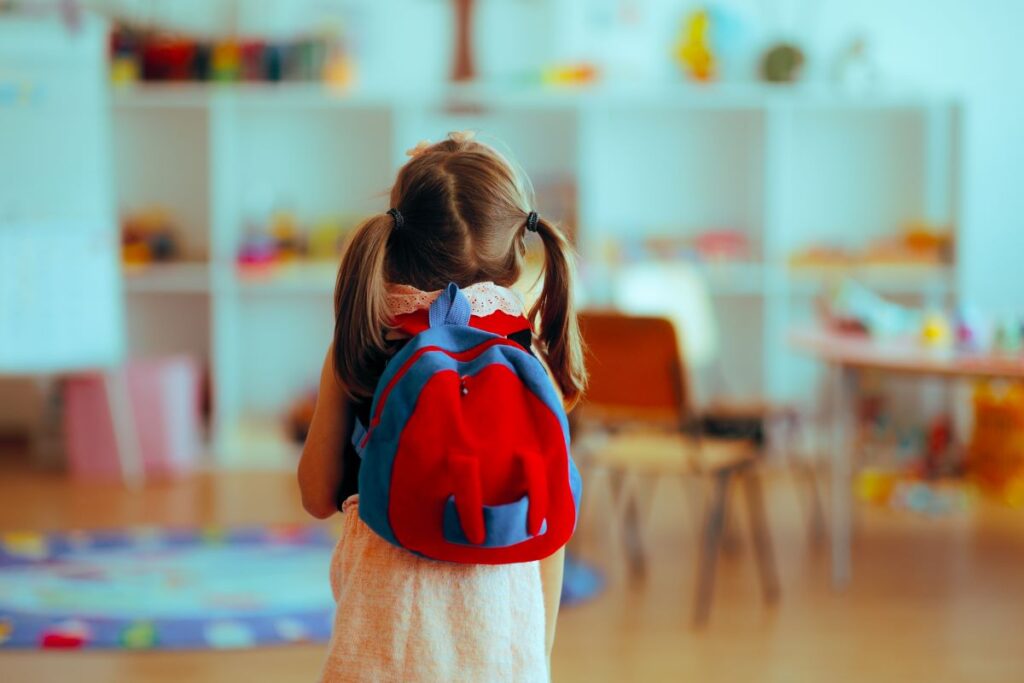The first day of kindergarten is a pivotal moment, not just for the eager (and sometimes anxious) five-year-olds stepping into a new world, but also for the educators who greet them. It’s a day brimming with potential, a chance to lay the groundwork for a lifelong love of learning and a sense of belonging.
As educators, we understand that while every student arrives with unique experiences and emotions, our collective goal is to transform this critical transition into a truly magical experience for each and every one.
Imagine a child, clutching a beloved teddy bear, eyes wide with a mix of curiosity and apprehension. Or another, bounding through the doors, ready to conquer the world. Each arrives with a silent question: “Will I be safe here? Will I be seen? Will I belong?”
Our answer, delivered through our actions and the environment we create, determines the trajectory of their initial school experience. This isn’t just about fun; it’s about fostering a secure, engaging, and inclusive foundation that sets the stage for academic and social-emotional success.
So, how do K-12 administrators and teachers, craft this unforgettable day? It begins with intentional preparation and a deep understanding of the kindergarten learner.
Crafting an Inviting First Day of Kindergarten Classroom Environment
The physical space is the child’s first impression of their new learning home. It should feel warm, welcoming, and stimulating, yet not overwhelming.
- Design for Discovery: Set up interest centers that encourage exploration and play. Think about a quiet reading nook with soft pillows, a block area inviting collaborative construction, or an art station stocked with open-ended materials. Label shelves and bins with pictures and words to promote early literacy and independence.
- Personalized Touches: Have name tags ready, perhaps with a pre-printed “welcome” message. Consider a “photo booth” area with fun props where children can take their first school picture, instantly creating a positive memory. Display examples of simple artwork or sensory play to hint at the exciting activities to come.
- Clear Pathways and Routines: Even on the first day, subtle cues about routines can be helpful. Designate clear spots for backpacks, lunchboxes, and coats. Visual schedules with pictures can help alleviate anxiety by showing children what to expect next.
Warm Welcomes: Beyond the Handshake
The way we greet children and their families sets the emotional tone for the entire year.
- Individualized Greetings: Wherever possible, greet each child by name at the door. A genuine smile, a comforting word, or even a silly wave can make a profound difference. For students who may be shy, a gentle, non-verbal acknowledgment can be just as effective.
- Family Connection: Recognize that separating from a caregiver can be difficult. Have a system for quick, positive interactions with parents. A small, pre-written note to send home can bridge the emotional gap. Provide clear information about dismissal procedures to ease parent anxieties ahead of time.
- “About Me” Station: Instead of a formal introduction, consider a low-pressure “About Me” activity where children can share something simple about themselves through drawing, pointing to a favorite color, or sharing a family photo. This offers early opportunities for connection and for teachers to learn about their students.
Engaging Activities for Connection and Comfort
The first day of kindergarten isn’t about academics; it’s about building community and comfort and readiness.
- Sensory and Free Play: Begin with activities that allow for free exploration and sensory engagement. Play-Doh, sand tables, or large building blocks can be incredibly calming and provide opportunities for children to naturally gravitate towards others.
- Circle Time for Community Building: Keep initial circle times short, interactive, and focused on building a sense of belonging. Simple songs, fingerplays, or a “name game” where children say their name and something they like, can encourage participation without pressure.
- Buddy System: Pair students for simple tasks like finding their cubby or walking to the carpet. This informal peer support can reduce anxiety and foster early friendships.
- Story Time with Purpose: Choose books that address new experiences, friendships, or emotions related to starting school. This provides a gentle way to discuss feelings and normalize the transition.
Nurturing Independence and Resilience
While we aim for magic, we also strive to empower our youngest learners.
- Guided Exploration of Routines: Instead of simply telling children about routines, guide them through the process. “Let’s all walk to the bathroom together,” or “This is where we put our hands when we’re listening.” Repetition and hands-on experience build confidence.
- Positive Reinforcement: Acknowledge and celebrate small successes – a child hanging up their backpack independently, helping a friend, or trying a new activity. Specific praise (“I noticed you shared the red crayon with Sarah, that was very kind!”) is far more impactful than generic compliments.
- Anticipate and Validate Emotions: It’s normal for some children to experience separation anxiety or overwhelm when going through change. Validate their feelings (“It’s okay to feel a little bit sad when mommy leaves, but we’re going to have so much fun here!”). Offer comforting alternatives like a special “thinking spot” or a comforting object.
Collaboration with Families and Beyond
The magic extends beyond the classroom walls.
- Open Communication: Send home a brief, positive recap of the day, highlighting successes and exciting moments. This reinforces the positive experience for both children and parents.
- Future Planning: Offer a glimpse into the exciting learning journey ahead. Mention upcoming themes, special events, or new skills they will acquire.
- Administrative Support: Administrators can play a crucial role by being visible, offering support to teachers, and ensuring resources are available. A warm greeting from the principal on the first day reinforces the school-wide welcoming atmosphere.
The first day of kindergarten is a masterpiece in progress, painted by the collective efforts of caring educators. By creating an environment of safety, fostering genuine connections, and celebrating every small victory, we don’t just teach; we inspire.
We make the first day truly magical, setting the stage for a fulfilling and successful educational journey for every unique learner who walks through our doors.
You’ve got important career goals — we have the graduate program to get you there. Check out our available graduate degree programs to advance your career today!




